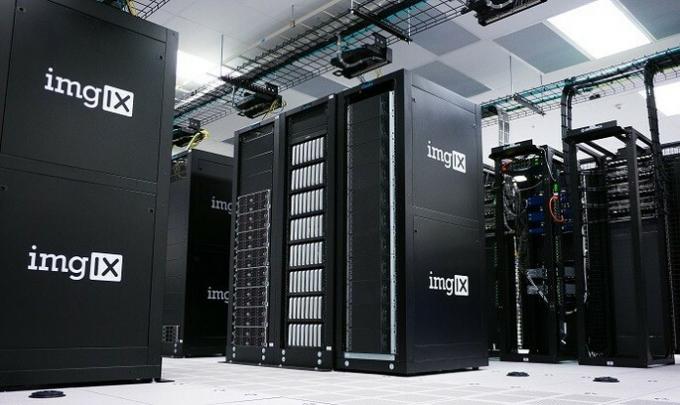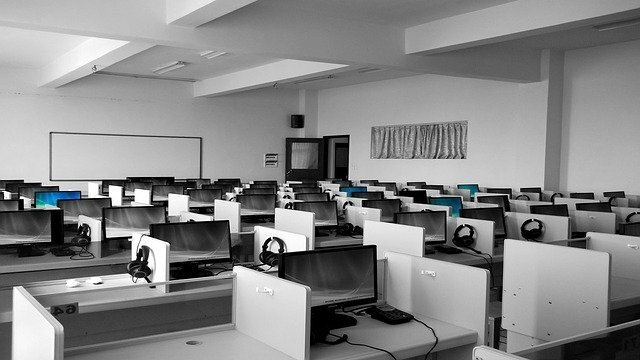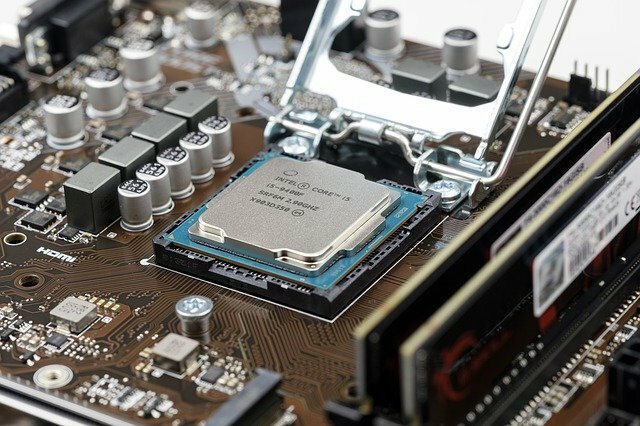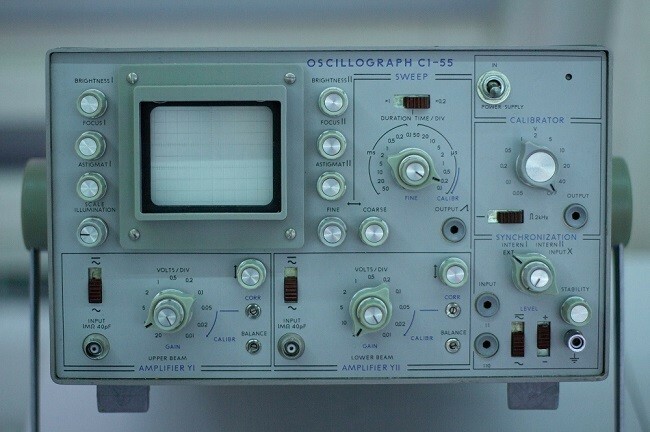What are the types of computers that exist
There are different types of computers depending on their size: supercomputers, macrocomputers, minicomputers, and microcomputers. And depending on the type of technology they use, they can be analog, digital, hybrid or quantum.
Remember that a computer is a device capable of receiving, processing and storing data through the execution of mathematical and logical operations. The result of this process is useful information for the user: graphics, texts, audio, video, games, etc.
Below we will see a more detailed description of each of the types of computers.
According to its size
Supercomputers

Also called high-performance computers, they are a group of computers organized in a network that work simultaneously, so they work as if they were a single computer.
This union of several computers increases the speed of the calculations and the operating power, which is measured in petaflops. A petaflop is a performance measure that equates to 1000 trillion operations per second.
The most powerful high-performance computer in the world is Fugaku, a computer made in Japan that reaches 415 petaflops, which is equivalent to the power of 230,800 PS4 consoles running at the same time weather.
Supercomputers are used to do complex industrial or scientific calculations. They are used in research centers, military organizations, governments or large companies.
Another example of supercomputers would be Summit, a team created by IBM for the US Department of Energy that achieves a throughput of 148.6 petaflops.
Macrocomputers or mainframes

Macrocomputers, mainframes or mainframes They are a type of large computer that is capable of processing a large amount of data, but on a smaller scale than a supercomputer.
Although mainframes are often confused with supercomputers, they differ not only because of their computing power, but also because require a limited number of processors to run, whereas a supercomputer requires thousands of they.
In addition, mainframes they are designed for simple calculations, whereas supercomputers are made for complex calculations.
The capacity and processing speed of the mainframes It varies, since it is currently possible to purchase this type of equipment on request, that is, the user can ask the manufacturer to design the equipment according to their needs. This means that from a small business to an international bank they can use a mainframe for your daily operations.
Today, mainframes They are the most viable option for companies and organizations that need to process large amounts of data. While today's personal computers can perform the same tasks as a macrocomputer, the latter have a greater storage capacity, processing speed, security and the possibility of being used by multiple users.
An example of one of the mainframes The most powerful in recent years is the z13, developed by IBM, capable of processing 2.5 billion transactions per day. This is equivalent to processing the sales of 100 CyberMondays in United States.
Minicomputers or workstation

The minicomputers or workstation (workstation) are specialized high-performance equipment, less powerful than a supercomputer but with more work capacity than a personal computer.
This memory, data processing and graphics capacity superior to a home computer makes them optimal for jobs related to engineering, graphic design, programming or science.
The workstation they are also used as servers, especially in small businesses that cannot afford a macrocomputer. This means that the team can run a variety of data-intensive services, such as an online store that generates multiple daily transactions.
In terms of physical or hardware structure, a workstation looks similar to a desktop computer. However, the workstation is much faster and can multitask without slowing down its performance. Also, this type of computer can work uninterrupted and has a longer lifespan than a traditional desktop computer.
However, the current trend in the computer market is that workstation they are going to disappear in the medium term, as personal computers become more powerful.
An example of minicomputers is the Apexx workstation high-performance, which are used especially in the world of graphic design, 3D animation and the creation of video games for their powerful graphics capabilities.
Microcomputers

Microcomputers are made up of a central unit (CPU) in which both the memory and the input and output circuits of the equipment are located, integrated into the microprocessor. This makes them much smaller and cheaper than workstations, macrocomputers, and supercomputers, which require more than one CPU.
Microcomputers, in turn, have several categories:
Desktop Computers (PC)

They are equipment for home or professional use that requires a fixed location. Until recently, they were characterized by having the CPU in a kind of box or tower that was installed near the monitor.
Traditional desktop computers are being replaced by computers all-in-one, which integrate all the components of the system behind the screen. This means that the computer is made up of only two devices: the monitor and the keyboard, therefore, they take up less space.
This type of computer can have a home or business use. In the latter case, they are efficient for the execution of basic administrative tasks, not for massive data processing.
Like other computers of greater size and capacity, the trend is that PCs are going to disappear from the market as laptops become cheaper and powerful.
Laptops

They are computers that integrate the microprocessor, the screen, the input and output ports, the keyboard and the trackball or mouse in the same device that works with a portable battery.
Laptops are a much more comfortable option than a desktop computer. However, its memory capacity is usually limited, unlike a traditional PC where its memory or performance can be increased.
Some examples of laptops are laptops or notebooks, netbooks (much lighter and with less functionality than a notebook), tablets, portable game consoles and ebooks like the Kindle.
Wearable Computers (wearables)

Also called body computers, these are devices designed to be used over clothing. The objective is that the user can interact with the microcomputer and obtain internet connectivity without depending on a laptop or desktop computer.
Although the term may be novel, since 1970 began the first attempts to combine analog and digital computing to create small computers. Those prototypes allowed everything from playing simple games on a wristwatch to the development of the first wrist cell phones.
Wearable computers today range from digital prosthetics to wearable devices for newborns, which collect information about the baby's movement, breathing, and body temperature baby.
Other examples of wearable computers include Google Glass, virtual reality devices, and smart wristbands, which detect the user's movement and can determine the number of calories losses.
See also:
- Software types
- Difference between hardware and software
- Input and output devices
According to its technology
Analog Computers

They are those that are based on electronic or mechanical circuits and measure a physical magnitude expressed in numbers, such as weight, temperature, pressure, speed or voltage.
Unlike today's digital computers, analog computers do not require a storage memory, since they process the data in a single operation and are not saved in the device.
Many analog computers have been replaced by digital technology, although there are industries that continue to use them. An example is the oil companies, where constant monitoring and comparison of data such as temperature is required.
Some examples of analog computers are submarine computers, tidal forecasters, the thermostat, or the slide rule.
Digital computers

They are a type of computer composed of several units with differentiated tasks to receive, process and deliver the data that have been previously entered by the user. This data is stored in fundamental units of information, called bits, made up of a binary digit (zero or one).
Digital computers need to be programmed before being used and they need to have software installed according to the problem that needs to be solved. For example, if it is a device for processing bank transactions, it requires a specific program or set of programs for that type of operations.
This type of equipment also has a storage capacity to save all the processed data and allow Internet connection.
Some examples of digital computers are workstations, laptops, or macro computers.
Hybrid Computers

As the name implies, these are computers that combine analog and digital technology. This type of device takes the analog values and "translates" them into digitized values.
The advantage of this type of equipment is that they combine the best characteristics of each type of technology. Analog computers may be fast, but they are not accurate. In contrast, digital technology provides greater accuracy in calculations.
An example of a hybrid computer is gasoline pumps, which, in addition to measuring the amount of fuel, convert that measurement into a sales price.
Quantum computers
Like digital computers, they use binary code for data processing. In this case, the fundamental unit of information is not a bit (which only allows zeros or ones), but a qubit, a unit that can have both binary states at the same time.
This represents a new paradigm in the field of computing, since it is possible to create new algorithms that a digital computer cannot generate. This translates into new solutions and applications ranging from medical research to understanding the universe on scales that until now had not been possible to study.
An example of this type of technology is the IBM Q System One, the first commercial quantum computer designed for business applications and scientific research.
See also:
- Computer Generations
- Difference between digital and analog system
